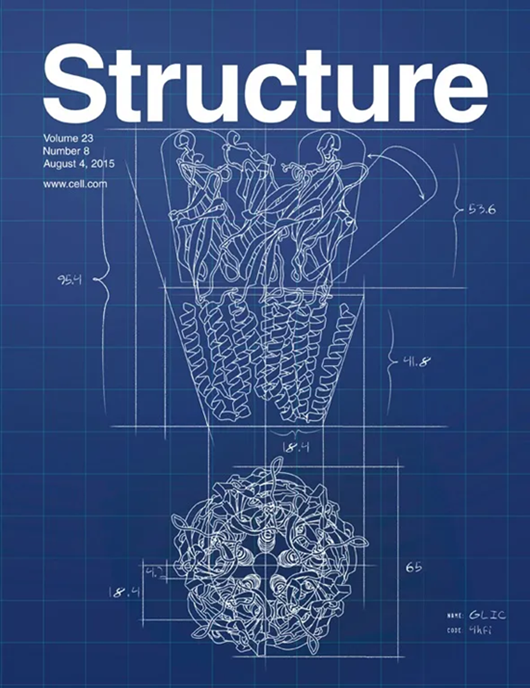The YEATS domain is a selective reader of histone methacrylation
IF 4.3
2区 生物学
Q2 BIOCHEMISTRY & MOLECULAR BIOLOGY
引用次数: 0
Abstract
Metabolically regulated lysine acylation modifications in proteins play a major role in epigenetic processes and cellular homeostasis. A new type of histone acylation, lysine methacrylation, has recently been identified but remains poorly characterized. Here, we show that lysine methacrylation can be generated through metabolism of sodium methacrylate and enzymatically removed in cells, and that the YEATS domain but not bromodomain recognizes this modification. Structural and biochemical analyses reveal the π-π-π-stacking mechanism for binding of the YEATS domain of ENL to methacrylated histone H3K18 (H3K18mc). Using mass spectrometry proteomics, we demonstrate that methacrylate induces global methacrylation of a set of proteins that differs from the set of methacrylated proteins associated with valine metabolism. These findings suggest that high levels of methacrylate may potentially perturb cellular functions of these proteins by altering protein methacrylation profiles.

YEATS结构域是组蛋白甲基化的选择性读卡器
代谢调节蛋白质中的赖氨酸酰化修饰在表观遗传过程和细胞稳态中起主要作用。一种新的组蛋白酰化,赖氨酸甲基丙烯酸基化,最近被确定,但仍然缺乏表征。在这里,我们发现赖氨酸甲基丙烯酸基化可以通过甲基丙烯酸钠的代谢产生,并在细胞中被酶清除,并且YEATS结构域而不是溴结构域识别这种修饰。结构和生化分析揭示了ENL的YEATS结构域与甲基化组蛋白H3K18 (H3K18mc)结合的π-π-π-堆叠机制。使用质谱蛋白质组学,我们证明甲基丙烯酸酯诱导了一组蛋白质的整体甲基丙烯酸化,这些蛋白质不同于与缬氨酸代谢相关的甲基丙烯酸化蛋白质。这些发现表明,高水平的甲基丙烯酸酯可能通过改变蛋白质甲基化谱来潜在地扰乱这些蛋白质的细胞功能。
本文章由计算机程序翻译,如有差异,请以英文原文为准。
求助全文
约1分钟内获得全文
求助全文
来源期刊

Structure
生物-生化与分子生物学
CiteScore
8.90
自引率
1.80%
发文量
155
审稿时长
3-8 weeks
期刊介绍:
Structure aims to publish papers of exceptional interest in the field of structural biology. The journal strives to be essential reading for structural biologists, as well as biologists and biochemists that are interested in macromolecular structure and function. Structure strongly encourages the submission of manuscripts that present structural and molecular insights into biological function and mechanism. Other reports that address fundamental questions in structural biology, such as structure-based examinations of protein evolution, folding, and/or design, will also be considered. We will consider the application of any method, experimental or computational, at high or low resolution, to conduct structural investigations, as long as the method is appropriate for the biological, functional, and mechanistic question(s) being addressed. Likewise, reports describing single-molecule analysis of biological mechanisms are welcome.
In general, the editors encourage submission of experimental structural studies that are enriched by an analysis of structure-activity relationships and will not consider studies that solely report structural information unless the structure or analysis is of exceptional and broad interest. Studies reporting only homology models, de novo models, or molecular dynamics simulations are also discouraged unless the models are informed by or validated by novel experimental data; rationalization of a large body of existing experimental evidence and making testable predictions based on a model or simulation is often not considered sufficient.
 求助内容:
求助内容: 应助结果提醒方式:
应助结果提醒方式:


